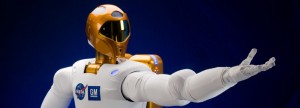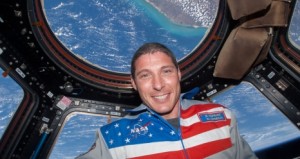A White House endorsement Wednesday of an extension of operations aboard the U. S. led International Space Station from 2020 to at least 2024 sets a wide stage for more work on life support systems for future human deep space missions, the maturing of U. S. commercial low Earth orbit crew and cargo transportation services, as well as research into medications and materials that could mean new high tech products for the Earth.

The International Space Station, continously occupied by U. S. astronauts since 2000. Photo Credit/NASA
The announcement from NASA Administrator Charles Bolden and John P. Holdren, the White House science advisor, came hours before the heads of 30 global space agencies gathered in Washington D. C. for an unprecedented two day summit of the future of space exploration.
The session could serve as a catalyst for open discussions on the extension among the station’s 15 international partners as well as the U. S. Congress. The gathering serves as an expression ofU. S.leadership in future human exploration as well, one that includes ambitions to reach an asteroid with astronauts by 2025 and the Martian environs a decade later.
“We are hopeful and optimistic that our ISS partners will join this extension effort and thus enable continuation of the groundbreaking research being conducted in this unique orbiting laboratory for at least another decade,” Bolden and Holdren said in a joint statement.
President Reagan proposed the station as a follow on to NASA’s space shuttle program in 1984. On orbit assembly, which began in 1998, was completed in mid-2011, permitting a sharper focus on science research and engineering demonstrations.
The six person orbiting science laboratory supports about 200 different experiments at any one time. Plans to complete station activities in 2016 were extended to 2020 early in the Obama Administration, and engineering assessment suggest the orbital outpost could operate until 2028 if there is adequate funding.
“This is a tremendous announcement for us here in the space station world and really for all of human space flight,” William Gerstenmaier, NASA’s associate administrator for human exploration and operations, told a press briefing. “There are some pretty significant benefits of any extension to go beyond 2020, allowing a planning horizon that is 10 years long.”
The long time space agency engineer offered some prominent examples.
Recently, medical researchers learned of an ailment that causes long duration astronauts to experience blurred vision. While there are theories on possible causes, the mechanism is still largely a mystery. It’s one of 21 potential health obstacles to sending humans into deep space that are currently under investigation on the station. In all, there are 32.
Other experiments are assessing the reliability of life supports systems like those that recycle air and water on the station for use on deep space missions. 3-D printing, a technology for producing spare parts, is also getting a serious look as are interactions between astronauts and robots for the routine maintenance and repair of spacecraft.

Robonaut 2 joined the crew of the space station in 2011 to explore human robotic interactions. Photo Credit/NASA
Since 2012, NASA has welcomed twoU. S.companies, SpaceX and Orbital Sciences, as commercial cargo providers — a service once handled by the now retired space shuttle fleet. Their multi-billion dollar re-supply contracts expire in 2016-17, and the proposed extension promises to support a healthy competition among the two companies and perhaps others to enter the market.
That prospect holds true for commercial crew transportation services as well. Three companies, Boeing,Sierra Nevadaand SpaceX, are working with NASA now to initiate astronaut launches by 2017. However, tight budgets have slowed the initiative, and the 2024 extension promises to make the commercial market for launching humans into orbit to the ISS and other destinations a more lucrative prospect.
Life on Earth may benefit as well. One example is ongoing research into new medications to deal with health issues, even techniques for improving food production.
Bacteria, for instance, demonstrate a greater virulence in the absence of gravity. Researchers are attempting to exploit that finding to develop antibiotics for the treatment of Salmonella, a form of food poisoning, and MRSA, a rugged bacteria strain responsible for infections in health care settings.


